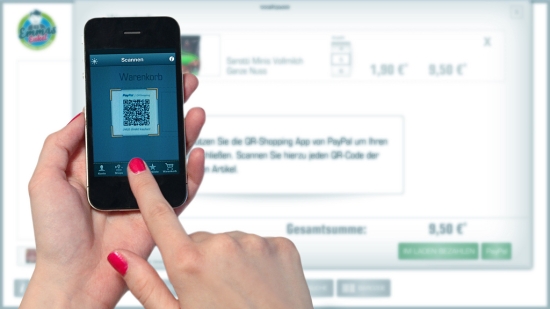Internet shopping has had a huge effect on the way consumers do their weekly grocery shop, with an ever-increasing number turning to online ordering in a bid to beat the crowds. Britain’s number one chain, Tesco, now offers a plethora of ways to buy both food and non-food items, from online order and delivery to click and collect, in order to give their customers a number of options to utilise their time more efficiently.

However, with literally thousands of supermarkets spread across the country, big brands are keen to hold on to customers by constantly upgrading their technological systems. Self-service checkouts have proven to be hugely popular since their advent several years ago, and now supermarkets are expected to pioneer fingertip payment systems – taking influence from French giant Auchan and DIY chain Leroy Merlin.
The system is very basic in theory, significantly speeding up the payment process and negating the need for money and debit cards. Consumers carry a payment card holding their fingerprint data and card details in a small case which communicates with the till – after collecting and scanning their items, shoppers simply press their finger to a scanner which reads their fingerprint data and authorises the payment, removing the chip and pin process entirely.
Andre Delaforge, speaking for developers National Security, claims that this method of payment is both speedier and more secure – while noting down a pin code is easily possible, duplicating a finger print poses more problems for those attempting to engage in identity theft.
“What we learned from the pilot is that if people are shopping, they are looking for a fast and convenient way to pay.
“A lot of people were interested in the technology because it was an easy way to pay without going through your bag.
“In one year this could be a common method of payment,” he told the Telegraph.
94 per cent of the 900 participants in the trial claimed that they would be willing to convert to biometric payments for all of their in-store purchases, proving that new technologies are readily welcomed by consumers. Should the payment scheme be expanded to encompass loyalty points and discounts, which Mr Delaforge claims is the next stage in development, it can be assumed that this percentage would increase further.
While this side of the Channel may not yet have biometric scanning as an option, progress has certainly been made in speeding up payments using new technology. Sainsbury’s, for example, is in the process of developing an app which allows customers to scan the barcodes of items using their smartphone as they shop, removing the need to unpack and re-pack at the till.
Eventually, it hopes to incorporate a smartphone payment option to this app, which is currently being trialled in three stores.
Would you be happy to use biometric payment options to speed up the shopping process, or is the thought of allowing supermarkets access to your fingerprint and iris scans a little too Big Brother for your liking?
Previous Post
Sainsburys Local Stores to Overtake Supermarkets by 2014